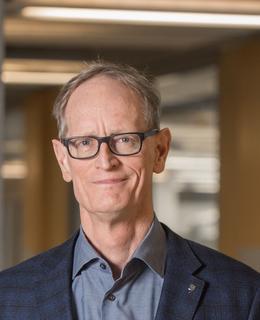
Steven Bryant
Positions
Professor
Schulich School of Engineering, Department of Chemical and Petroleum Engineering
Chief Scientist
Haskayne School of Business, Creative Destruction Lab - Rockies [CDL-Rockies]
Chief Scientist
Creative Destruction Lab - Vancouver
Co-founder
CalAgua Innovations
Co-founder
Cnergreen
Contact information
Background
Educational Background
Bachelor of Engineering Chemical Engineering, Vanderbilt University, 1981
Ph.D. Chemical Engineering, The University of Texas at Austin, 1986
Research
Areas of Research
Solutions to some of the greatest challenges facing society will involve novel technologies and large-scale deployment of technologies. But in the energy and climate sectors, implementing such solutions has often been slow and ineffective. Too often this is because the factors influencing societal enthusiasm for a technology were not considered while that technology was being developed. This experience does not bode well if we are to meet timelines for mitigating climate change such as “Net Zero by 2050.”
Working closely with scholars from faculties of Arts, Law, Business, Science and Engineering, Dr. Bryant is helping drive transformative interdisciplinary efforts to change this approach. In essence, the goal is to integrate social innovation into the entire process of technology development. An example of current interest to determine characteristic features – social as well as technological – for Greenhouse Gas Removal (GGR) technologies viable in Canada. By reframing the process, this effort avoids traditional pitfalls such as battles for social license or contention over responsibility for unpredicted consequences. It also removes the silos which have developed between science and non-science disciplines.
Collaborating with experts from biological sciences and geosciences, we are asking the question: can microbe/mineral interactions be designed to enable new behaviors, new materials and new processes? Our research has provided insights into a little known lifeform known as biological-nanoparticle hybrids (bionanohybrids). They emerge from careful control of environmental conditions which are tuned specific metabolic pathways. Bionanohybrids can metabolize nutrients and undergo cell division just as they did before becoming hybrids. Because the nanoparticles remain attached to their surfaces, these hybrids can also interact with light, sound, electromagnetic fields and waves. Thus these entities can do things that neither the microbe nor the nanoparticle could do alone.
Bionanohybrids sit at the interface of biological science and materials engineering and have the potential for far-reaching applications in the areas such as precision medicine, environmental remediation, biological control and nanoparticle manufacturing.
Negative emissions, also referred to as carbon dioxide removal, took centre stage in late 2018, following a series of reports from international and national organizations including the IPCC and the National Academies of Sciences, Engineering and Medicine. While natural processes have been removing CO2 from the atmosphere for much of the Earth’s history, anthropogenic activity is emitting so much CO2 that technological methods of removing CO2 are also needed if society is to mitigate climate change. Unfortunately, very few technological options are currently on the table, and the window of time for action is short.
A potential solution to this challenge is to deploy emerging technology such as direct air capture using oil and gas reservoirs to power the direct air capture and to store the captured CO2. Working with colleagues, we have shown that such a process can be net negative: the amount of CO2 removed from the atmosphere exceeds the amount of CO2 emitted when the oil and gas is produced, transported, refined and burned as fuel. Using existing oil and gas markets and infrastructure can accelerate the deployment of negative emissions technologies at the scale needed. The same process can be used to completely offset emissions from the parts of the transportation sector that will be difficult to decarbonize.
As the world transitions to a net-zero future, the need to decarbonize fossil fuels during this decades-long endeavor remains of particular urgency. Advanced materials, whether alone, in combinations or in conjunction with the microbiome, can reduce the resource intensity of current technologies for producing oil and gas. They can also help negate the consequences of burning those fuels, extend the safe life of infrastructure and even have spinoff applications to novel therapeutics. Materials originally developed for non-energy applications are bringing much needed innovation into old-school energy processes.
Nanoparticles have been used in bio applications and the first evidence has been obtained of extracellular electron transport to nanoparticles from anaerobic microbial degradation of crude oil, a crucial step towards the grand challenge of producing zero carbon energy carriers from petroleum reservoirs.
The use of nanoparticles for CO2‐foam mobility is an upcoming technology for carbon capture, utilization, and storage (CCUS) in mature fields. Silane‐modified hydrophilic silica nanoparticles enhance the thermodynamic stability of CO2 foam at elevated temperatures and salinities and in the presence of oil. Experimental results have shown that CO2 stored during CCUS with nanoparticle‐stabilized CO2 foam increased by more than 300% compared with coinjections without nanoparticles.
Participation in university strategic initiatives
Awards
- Canada Excellence Research Chair in Materials Engineering for Unconventional Oil Reservoirs, Natural Sciences and Engineering Research Council of Canada (NSERC). 2014
- Sustainability and Stewardship in the Oil and Gas Industry Award, Society of Petroleum Engineers . 2021
In the News
- Settling the tailings pond question - advances in the treatment of fluid find tailings. CIM Magazine. (2017)
Are you the profile owner?
Login to edit.
